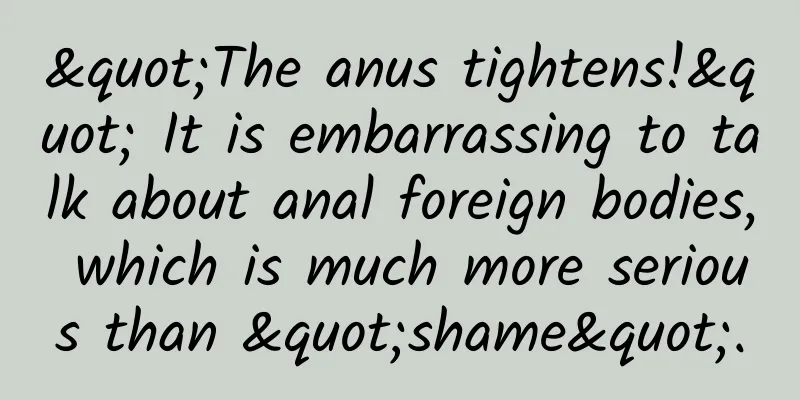Spots on a woman's face

|
Why do spots suddenly appear on the face? I believe this is a question that many women are concerned about. The formation of facial spots corresponds to various organs of the human body and is a manifestation of systemic symptoms. It is also more closely related to the imbalance of the liver, spleen and kidney. So what are the locations of spots on women’s faces related to? If you have spots on your face, be careful of gynecological diseases! Experts believe that the skin is closely related to the internal organs, meridians, blood and qi. Spots on the face may be the main symptom of gynecological diseases in a certain part of the human body, so women should be vigilant. Only when the internal organs function normally, blood and qi are full, and meridians are smooth, the body and appearance will not deteriorate, the skin will be smooth and delicate, and dark spots will not occur. Causes of spots on the face The face is actually a true reflection of the body, with the internal organs corresponding to the center of the face and the limbs corresponding to the lower ends of the cheeks. Clinical medicine has found that wherever there is chloasma, there are often problems with the corresponding meridians and internal organs. The darker the color of the melasma and the more clearly defined the boundaries, the more obvious the symptoms are, while lighter spots often appear before active symptoms. Therefore, by observing the location of chloasma, one can understand the physical condition of the internal organs of the human body as early as possible. They grow on both sides of the forehead and temples. This is the course of the liver and gallbladder meridians on both sides. If there is chloasma, it is often caused by an imbalance in the functions of the gallbladder and liver, and stagnation of liver qi, and symptoms such as weakened digestion and absorption, and insomnia and dreaminess often occur. Under the upper eyelid The area below the upper eyelid corresponds to the neck, shoulders, and upper limbs. The appearance of chloasma here indicates that the shoulder joint is dislocated and affected by cold or the neck and shoulder tendons are injured. Symptoms of stiffness and soreness of the neck and shoulder muscles often occur, and you must be alert to neck and shoulder diseases. Located in the middle of the nose bridge The middle of the bridge of the nose corresponds to the gallbladder and liver. A pale yellow face and chloasma in the middle of the nose are often related to liver depression and qi stagnation, bad mood or too much stress. It reminds you that the liver fails to descend and the gallbladder and liver are stagnant, and you need to be alert to fatty liver and gallbladder and liver diseases. Growing on the cheekbones The center of the two zygomatic areas is where the small intestine meridian runs, the two zygomatic areas are the matching areas of the kidneys, and the upper end is where the triple burner meridian runs. Chloasma at the stork bone position is often accompanied by shortness of breath, panic, chest tightness, decreased digestion and absorption function, and even symptoms such as loss of appetite, abdominal distension, and diarrhea. It is the main manifestation of weakened digestive tract and heart function. The presence of chloasma or age spots from the cheekbones to the front and above the ears indicates insufficient kidney qi, poor circulation of triple burner qi, and disordered lipid metabolism. Upper lip spots The upper lip is the course of the small intestine meridian, which corresponds to the urinary and male reproductive organs. The growth of chloasma here is a sign of insufficient kidney essence and internal heat in the intestines due to yin deficiency. It is often accompanied by constipation, irregular menstruation and other symptoms, and you should be alert to diseases of the uterus and ovaries. On both sides of the jaw The two sides of the lower jaw correspond to the lower limbs, liver and gallbladder meridians, small intestine meridian, and the course of the small intestine meridian. The presence of chloasma here reminds you that the blood circulation system in the lower limbs is poor, which is a sign of insufficient spleen and kidney qi. It is often accompanied by sore lower limbs, sore waist and weak legs, cold hands and feet, and weakened digestion and absorption. |
<<: Small blisters at the vaginal opening
>>: How to use your hands to enlarge your breasts while sleeping
Recommend
Can I drink red wine when my period comes?
When women have their period, their physical mani...
Is ligation good or bad?
The emergence of sterilization is actually to fac...
Can you see the gestational sac one month into pregnancy?
After a woman becomes pregnant, a gestational sac...
Treatment for brown discharge during pregnancy
Brown discharge in mid-pregnancy is a measure of ...
What is the most effective way to stop morning sickness?
As we all know, women's bodies will have grea...
I got pregnant again in the same month of my miscarriage.
Pregnancy is a critical period for preserving the...
Photorejuvenation and whitening, let's learn more about it
Many women have spots, acne marks and other defec...
Does Sichuan pepper and brown sugar water reduce milk production?
Peppercorns are a condiment that every household ...
Where is the female urethra?
There is no doubt that both men and women have ur...
Can I have abortion after more than two months?
Medical abortion is a relatively common method of...
Why do women's labia turn black?
When women observe their labia, they will find th...
Picture of uterine cervix after ring
The IUD is a safe, effective, economical, highly ...
Why does my vaginal discharge contain blood after a medical abortion?
There is still inflammation in the body after med...
What causes non-menstrual bleeding in women?
As we age, our body functions mature. Many adoles...
Is it still useful to eat Tongcao after weaning?
Breast milk is a healthier food for babies, espec...









